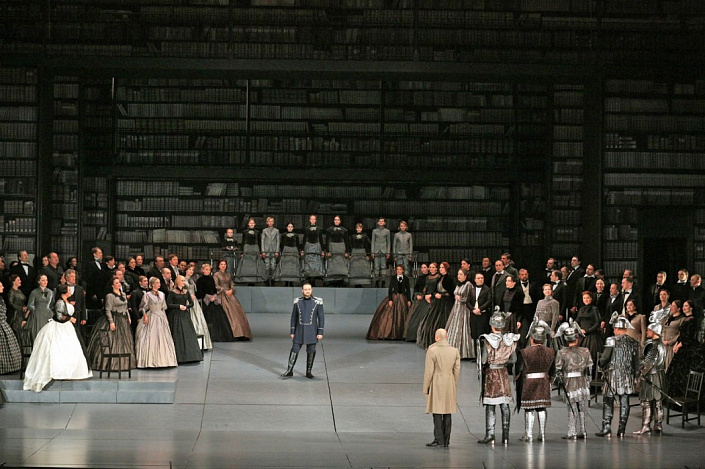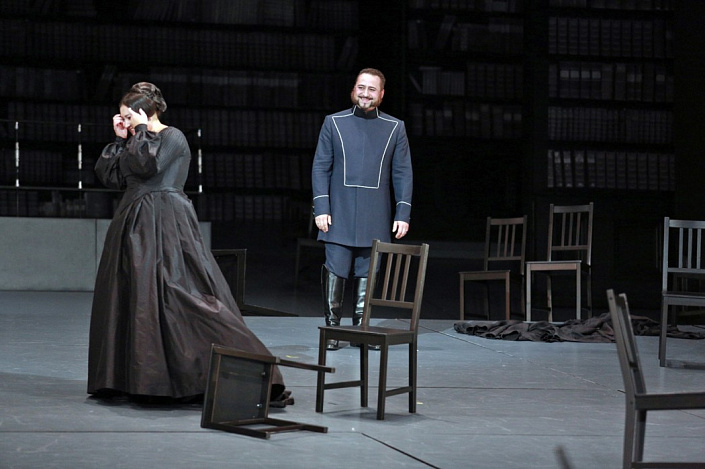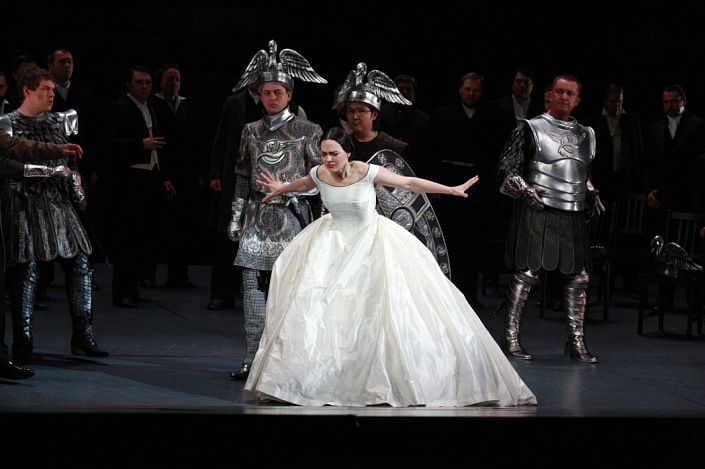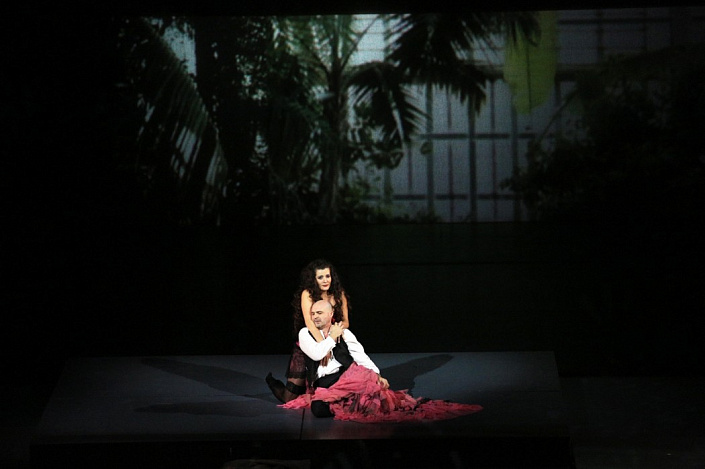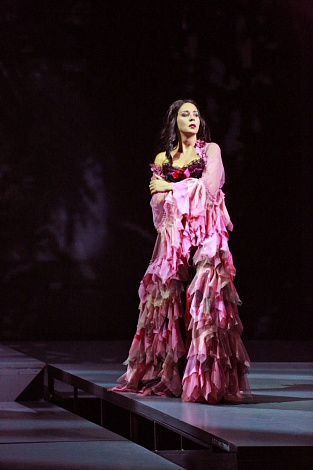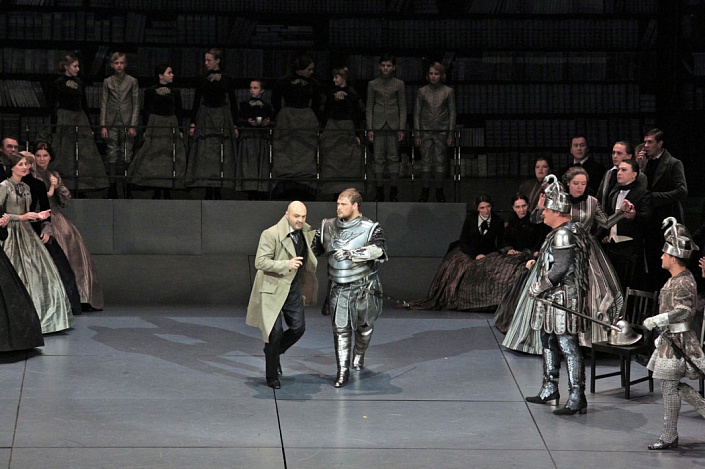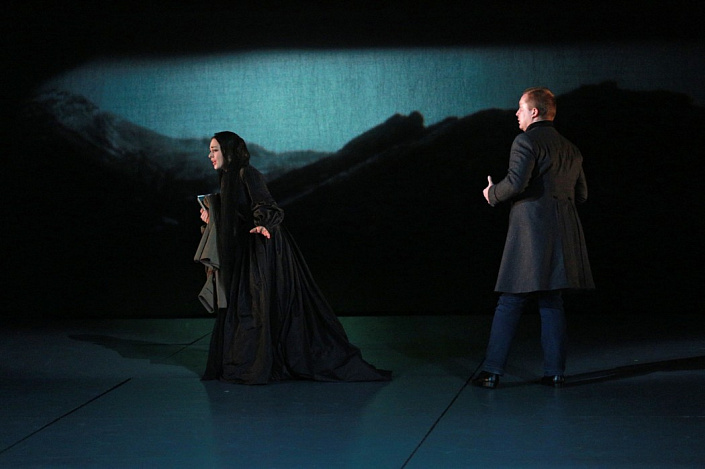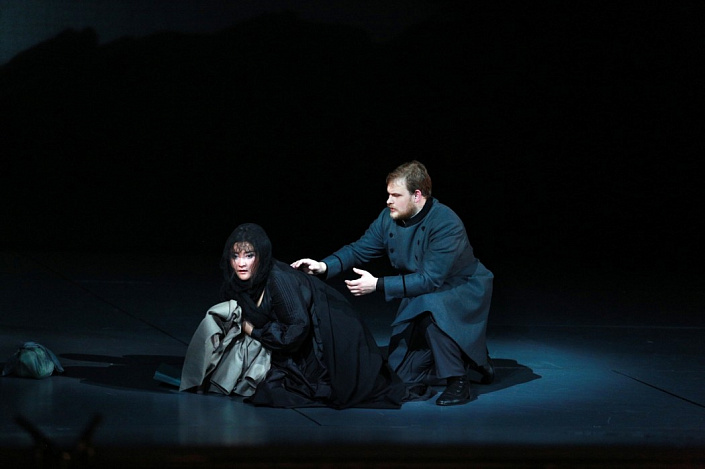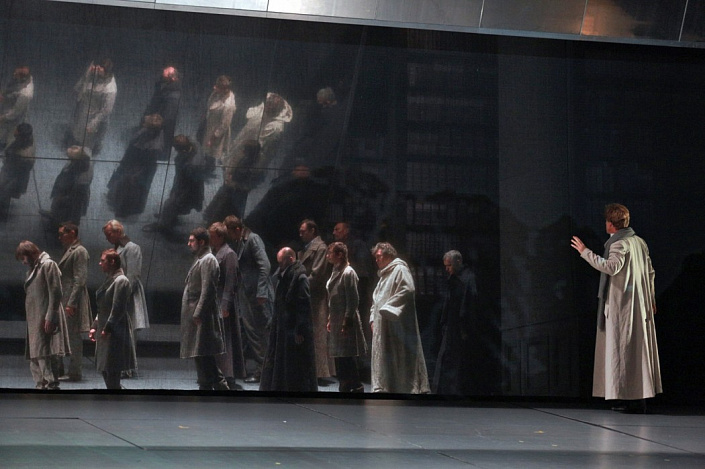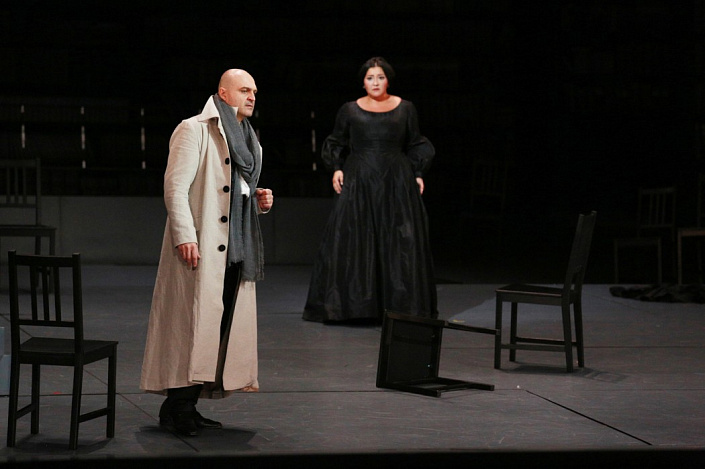| Music | Richard Wagner |
| Libretto | Richard Wagner |
| Music Director and Conductor | Fabrice Bollon |
| Conductor | Anton Grishanin |
| Stage Director | Andrejs Žagars |
| Set Designer | Andris Freibergs |
| Video Designer | Ineta Sipunova |
| Lighting Designer | Kevin Wyn-Jones |
| Principal Chorus Master | Stanislav Lykov |
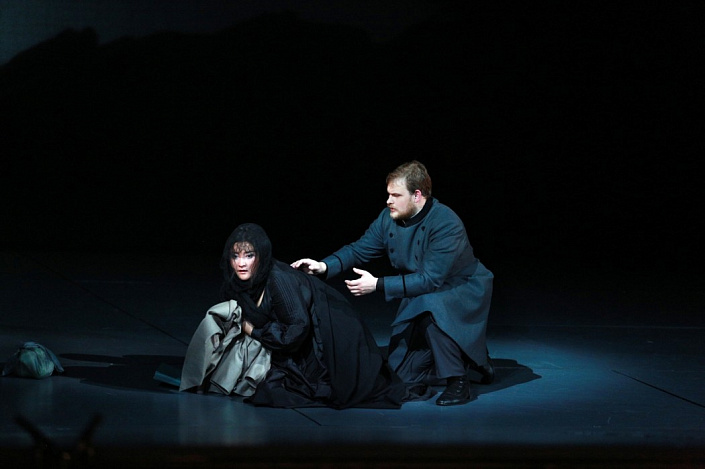

In 1842, Wagner, having spent three years in Paris, came back to Germany: the king of Saxony offered him the position of court chapel-master in Dresden. On his way there the composer passed through Thuringia and for the first time saw the Wartburg Castle, one of the emblematic sites of the German history and culture. Three years later, the opera Tannhäuser premiered in Dresden. In that opera Wagner turns for the first time to German legends and folk lore. Later on they would become the essence of his creative work.
This vital event – Wagner’s transition from one cultural milieu to the other, contrasting to the first, served as a starting point in the staging conception. Paris of the time was notable by the most laid-back morals and manners in all of Europe. After the Napoleon Code was passed in 1804, France became a haven for those whose life transcended the limits of strict morality. It was a city of salons, of luxury and entertainments. In vain had Wagner tried to conquer the Capital of Love. Paris had refused to hear his music and never paid particular attention to his critical pamphlets.
For staging Tannhäuser, different versions of the opera often get merged. However, it is the only Wagner’s opera that has an author’s version in another language. While preparing for the 1861 Paris premiere Wagner participated in the translation process. It makes it possible to perform the “French” scenes in the French language, which is more melodic and sensual than German. Contrasting the two allows us to go deeper into the essence of the opera, which tells of a conflict between things hedonistic and sacred. Tannhauser rushes from one extreme to the other but is unable to achieve peace of mind at either.
